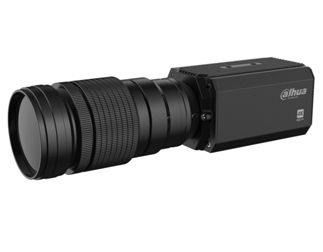By 2018, over 90 per cent of analogue cameras will be HD analogue says the manufacturer Dahua Technology, quoting a 2016 IHS report. Dahua introduced HDCVI Technology in 2012, and says HDCVI matches up well to the IP equivalent. Customers can choose the most suitable system for their sites without being constrained to IP the firm says. The emergence of multi-mode DVR, which records video from HDCVI, TVI, AHD, CVBS and IP cameras, makes it easy to upgrade a site gradually the firm points out.
Dahua is introducing HDCVI 4.0 technology, with three parts: 4K-HDCVI for video capture, IoT-HDCVI for multi-dimensional sensing and AI-HDCVI to turn HDCVI-video into searchable Boolean data. New products will be introduced over 2017.
Dahua 4K-HDCVI adopts 4K Ultra HD image acquisition and back-end DVR storage. According to the product firm HDCVI has overcome the bottleneck of transmission bandwidth to achieve high resolution video, and extends the potential of HDCVI it’s claimed. Dahua’s IoT-HDCVI, with IoT sensing, enables cameras to surpass basic function of providing video information. By using Internet of Things sensors, coaxial cables can transmit not only video signal, but also information such as alarms, and temperature and humidity. HDCVI supports complex data transmission between camera and DVR, and makes it possible for multi-dimensional sensing cameras and DVR to form an IoT solution, the makers say. The near real-time transmission of HDCVI also improves the responsiveness of IoT applications.
Dahua AI-HDCVI integrates HDCVI video and audio with AI (Artificial Intelligence) Deep Learning. AI-HDCVI performs the makers say near-human level accuracy in image classification and voice recognition to turn HDCVI video and audio into searchable Boolean data. Uses include in retail; and in city transport by vehicle traffic analysis.
4K-HDCVI is the first product launched by Dahua Technology in 2017. It transmits 4K video signals up to 700m, it’s claimed (by RG6 cable). The 4K-HDCVI offerings include a 4K box camera, 4K IR bullet and dome camera, 4K fish-eye panoramic camera, 4K multi-sensor 180 degree panoramic camera, and a series of 4K supported XVR (multi-mode digital recorders). These 4K-HDCVI products deliver 3840(H) x 2160(V) ultra-high resolution images, equivalent to four 1080 HD cameras, to achieve wide angle coverage the makers say.
HD analogue, limited by the data transmission capacity of coaxial cables, was not able to provide 4K resolution. Dahua Technology developed TX and RX chipsets so that its 4K-HDCVI products are capable of these transmission distances:
– RG6 coaxial cables for 700m video and audio lose-less transmission;
– RG59 coaxial cables for 500m video and audio lose-less transmission; and
– UTP Cat 6 network cable for 300m video and audio lose-less transmission.
The new 4K XVR recorder works with all the company’s HDCVI/HDTVI/AHD cameras, and supports CVBS and IP cameras. Installation, configuration, operation and maintenance of 4K HDCVI are the same as before, offering it’s claimed the ‘plug and play’ convenience of analogue video. Once your DVR is replaced by a new 4K XVR, you can replace a camera with 4K camera or add 4K cameras as you go.
The DH-HAC-HF3805G, pictured, with the Sony 4/3-inch 8MP Starvis sensor, is able to output 3840(H) x2160(V) HD images. It is also claimed to be the first HD analogue camera to use M43 mount lens in the security industry which brings the M43 lenses to customers. Users can choose their preferred lens based on scenarios. This camera also offers auto-focus, image magnification for dynamic detection and a linkage alarm without the need to use the back-end. All the settings and functions can be controlled by the OSD menu, and used with an applicable housing. According to the manufacturers this camera is for outdoor surveillance, even it’s claimed under poor illumination.
The new DH-HAC-PFW3601 is the first HD analogue multi-lens infrared camera with a 4K 180 degree panoramic view. This star product makes use of Dahua’s image stitch algorithm to perform 180 degrees panoramic stitching. It can be controlled by the OSD menu. By using three Sony Starvis sensors and F1.4 large aperture lens, this infrared camera delivers images even under low light, the makers say. It also outputs panoramic stitching images and three single-lens images. Working with the 4K XVR, panoramic images can set up an electronic cruise model to give a multiple target split-screen view using the magnifying tracking function. It’s for use in detection of moving targets, according to the makers. The camera has IP67 and IK10 protection, making it suitable it’s claimed for entrances and exits, city junctions, and parks.
Future development of HD analogue must fit the needs of IoT and big data applications, which is driving security systems in the next few years, the company adds. AI (Artificial Intelligence) Deep Learning will be a key technology, the company says. Visit www.dahuasecurity.com.










